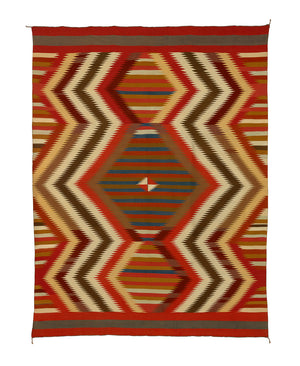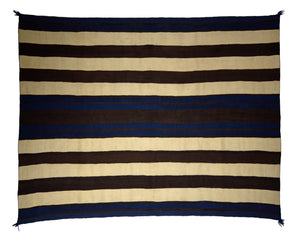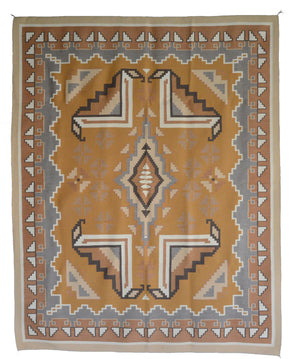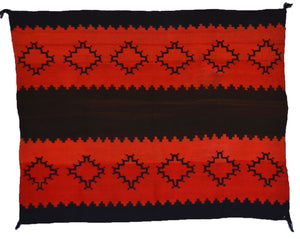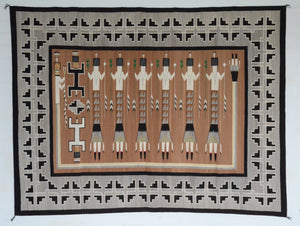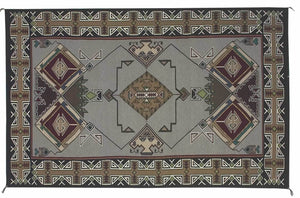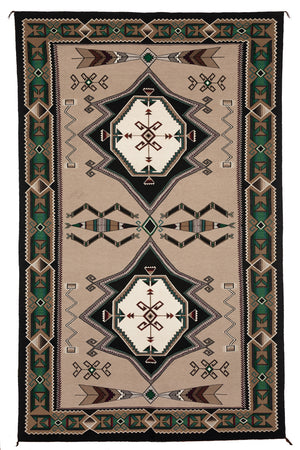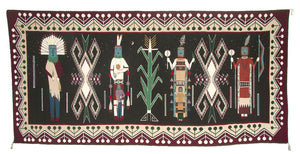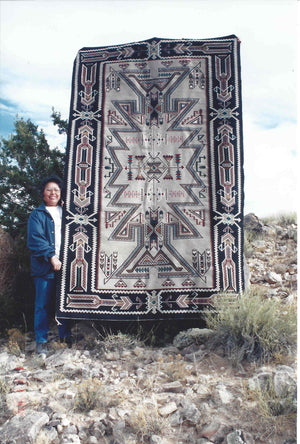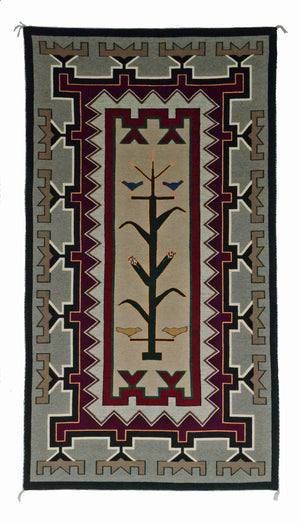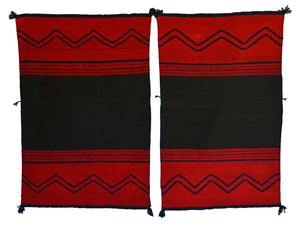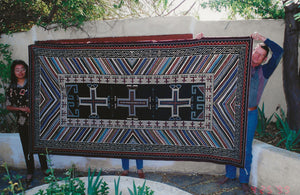- Zuhause
- Serape Navajo Weaving : Historic : GHT 778 : 54″ x 76″ (4'6" x 6'4")
Serape Navajo Weaving : Historic : GHT 778 : 54″ x 76″ (4'6" x 6'4")
Verwandte Produkte

Historic Navajo Serape with Spider Woman Hole: PC 258 : 57″ x 75.5″ (4'9" x 5'11.5")
$ 85,000.00
This extremely rare serape blanket was woven with Saxony. And even more remarkable it comes with a Spiderwoman hole in its center. This Serape has Indigo dyed warp, like this textile has, was only made available at Bosque Redondo and Fort Wingate to a limited number of Navajo weavers who were incarcerated for the purpose of weaving for the ...

First Phase Chief Blanket Early Classic Ute Style : 1st Phase : Historic Navajo Weaving : 51" x 68" (5'8.5" x 4'3") Call for Pricing
This First Phase Navajo Chief Blanket is an EARLY Classic Ute. Circa 1800-1850. One of the finest 1st Phase Chief Pattern Blankets known to have been made. A rare treasure having likely survived 200 years. Your chance to purchase the best of the best! This Ute Style 1st Phase Chief Blanket is very finely and tightly woven with pure Churro wo...
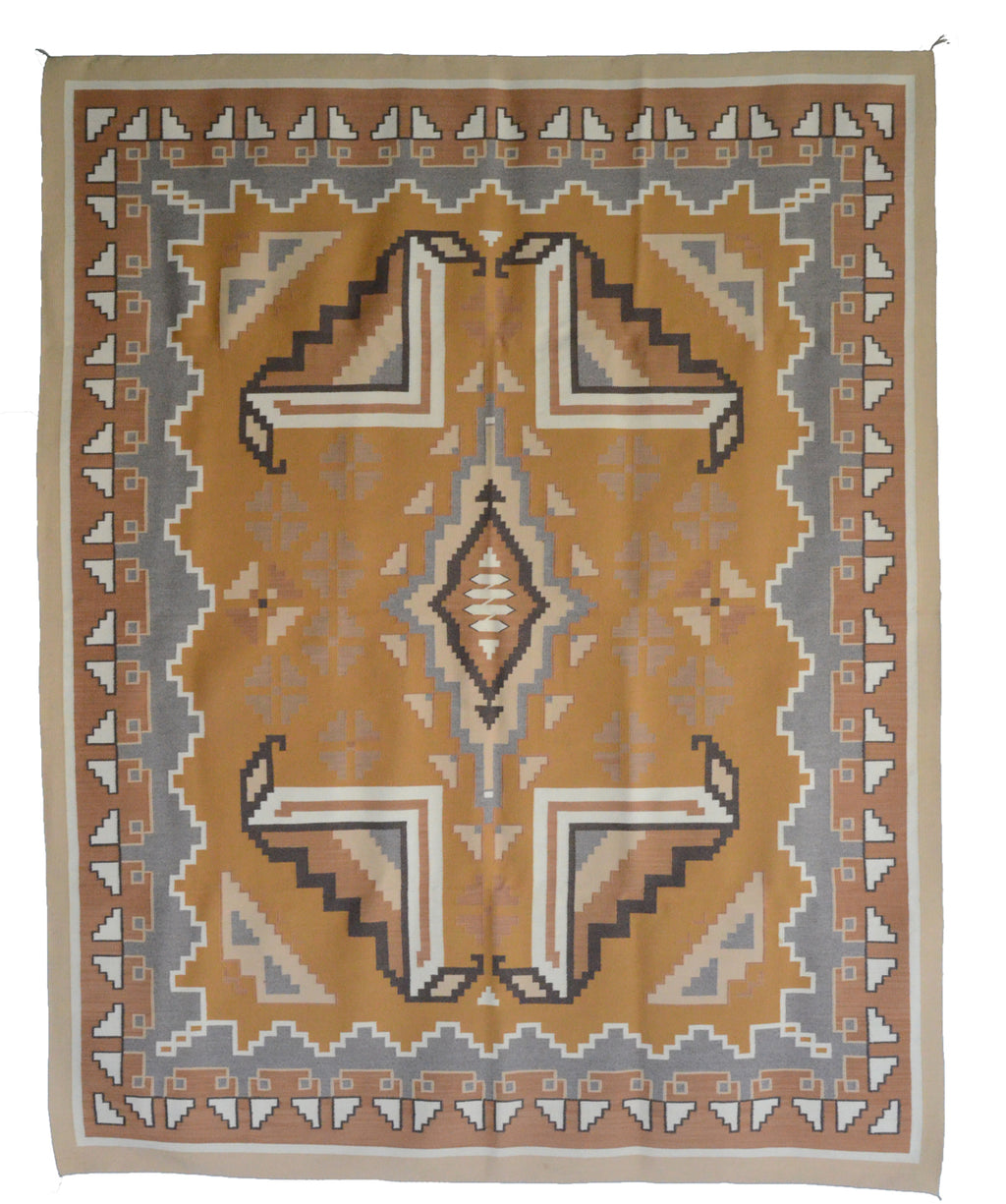
Burntwater Navajo Weaving : Marie Shirley : PC 273 : 84" x 104" (7' x 8'8")
$ 45,000.00
Burntwater - Chinle. Navajo Rug for Sale. Hand spun, natural dyes, natural wool colors. Native wool roving. From the Chinle Area of the Navajo Reservation, Master Weaver Marie Shirley (Brown) has won many awards. Her weavings have been exhibited and published in the "Fine Art of Navajo Weaving" (under the name of Marie Brown). Well known for h...
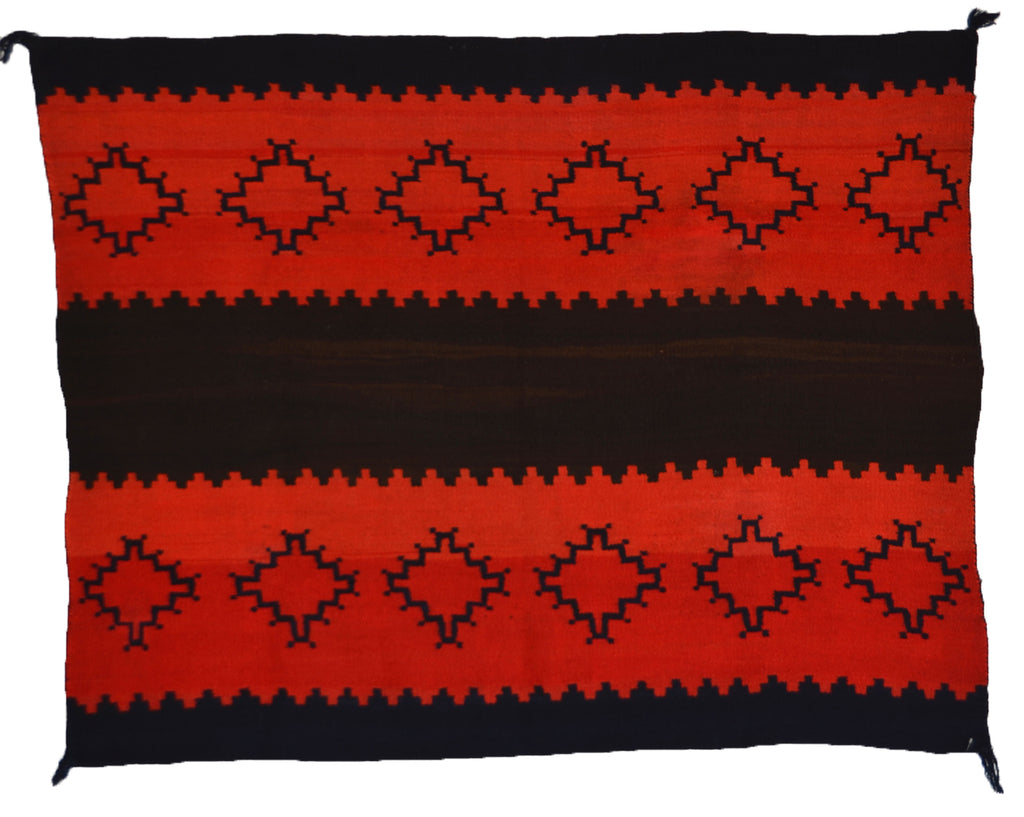
SOLD - PC 157: Classic Woman's Manta : Historic Navajo Blanket
Museum quality Classic Woman's Manta. Super Rare Example!Highly unusual Indigo Blue Warp and side cords! Also interior designs and top and bottom designs are a very deep hue of indigo blue. Red is Bayeta and American flannel. Spiderwoman cross design. Brown in center is over dyed with Sumac natural dye. Very tightly woven and in some places s...
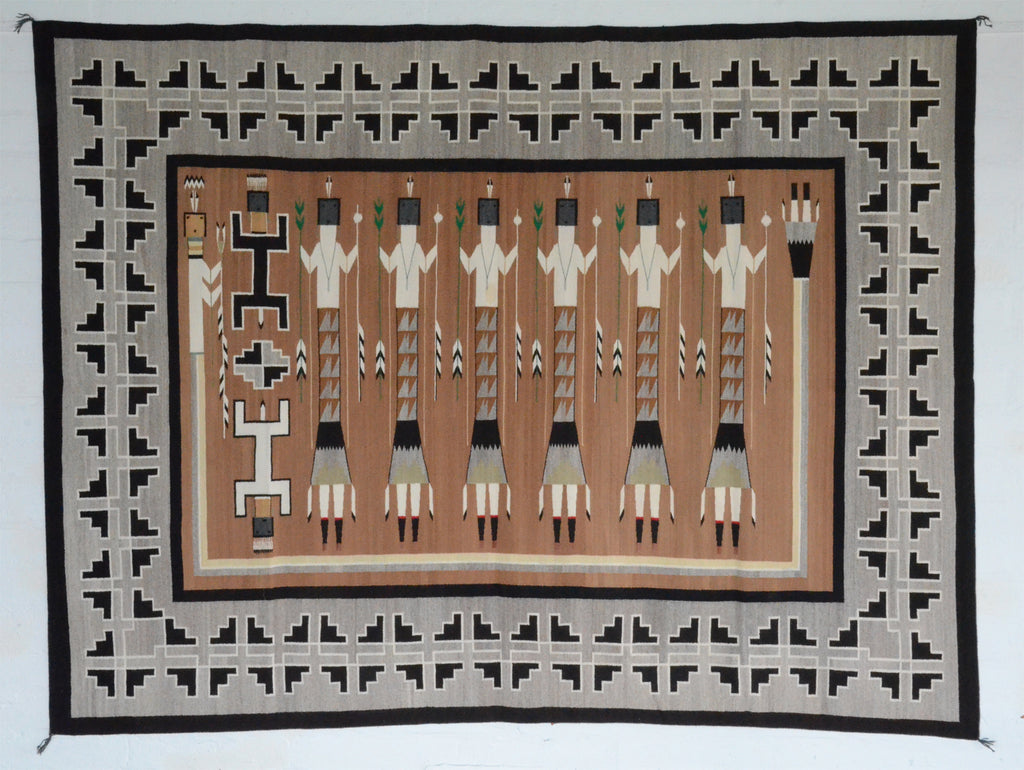
Yei Navajo Weaving : Marie Shirley : PC 272 : 67" x 92" (5'7" x 7'8")
$ 45,000.00
Yei Navajo weaving for sale. With Rainbow Yeis & Hero Twins. All hand carded, hand spun, native wool, aniline red and green, some natural dyes and wool colors, over dyed black. From the Chinle Area of the Navajo Reservation, Master Weaver Marie Shirley (Brown) has won many awards. Her weavings have been exhibited and published in the "Fine...
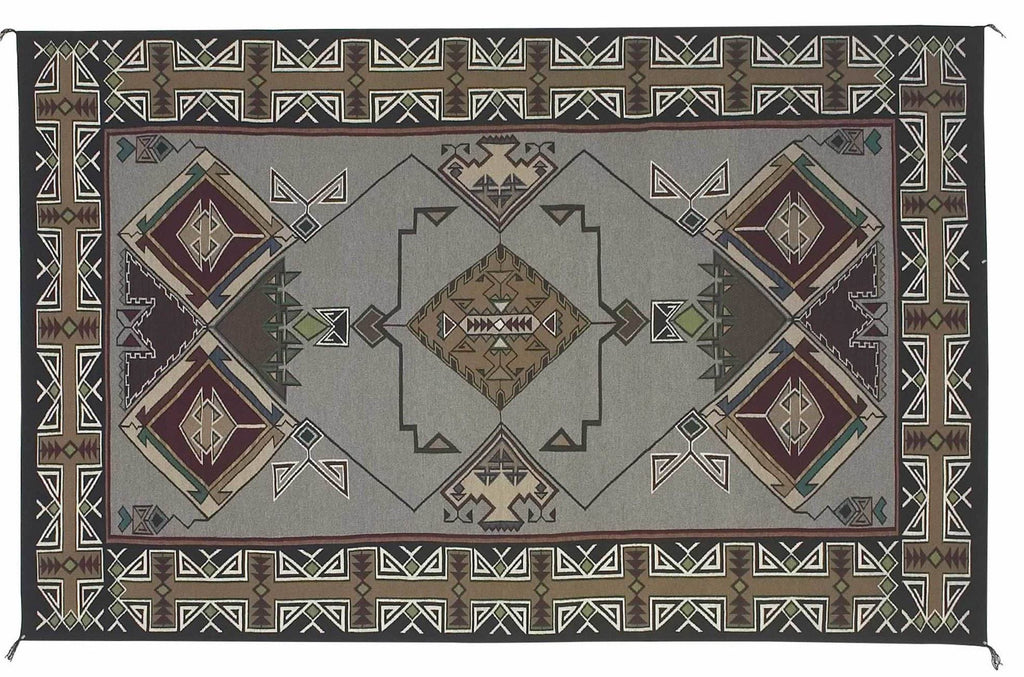
Teec Nos Pos Navajo Rug : Linda Nez : Churro 509 : 72" x 108" (6′ x 9′)
Master weaver Linda Nez has a gift for creating magnificent works of art. Great things take time, this weaving was on the loom for 15 months This weaving is as tight as canvas and as fine in design as any Navajo Weaving. Upon closer inspection you will see her expert color and design combinations. This gorgeous piece comes from our exclusive Chu...

Teec Nos Pos Navajo Rug : Linda Nez : Churro 224 : 72" x 120" (6' x 10')
$ 75,000.00
Master Weaver Linda Nez's Teec Nos Pos master piece. Steve loved this weaving. It has been in many shows and often is the center piece of the Gallery. This weaving took part in the "The Getzwiller Collection of Contemporary Navajo Weavings 1975 - 2000", at the Desert Caballeros Western Museum in Wickenburg AZ. This weaving was part of "One Tra...
Night Sky Yei be Chei Pictorial Navajo Weaving : Berlinda Nez Barber : Churro 227 : 48" x 105" (4' x 8'9")
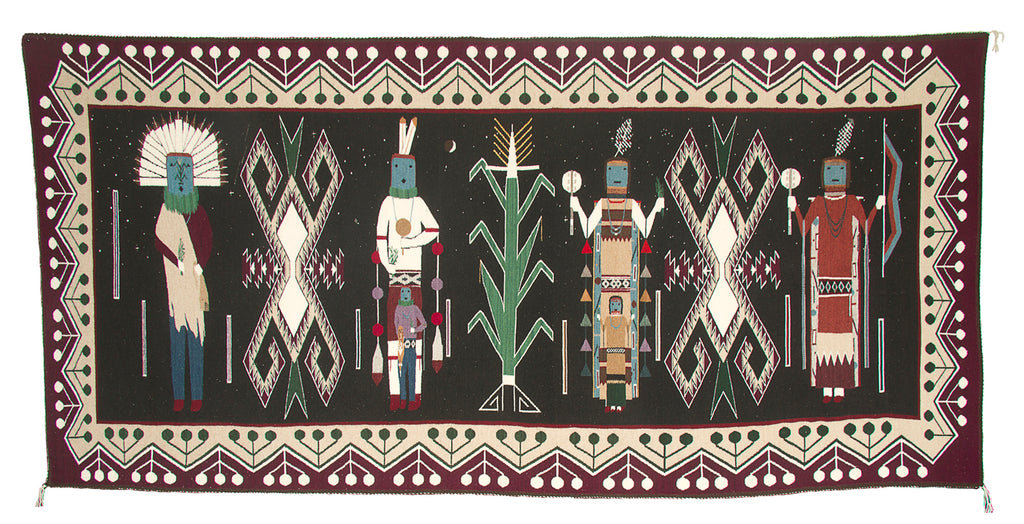
Night Sky Yei be Chei Pictorial Navajo Weaving : Berlinda Nez Barber : Churro 227 : 48" x 105" (4' x 8'9")
$ 65,000.00
Incredible Night Sky Yei be Chei Pictorial with a Teec Nos Pos border by Master Weaver Berlinda Nez Barber - one of the very best contemporary weavers today. This rug is made from custom spun, hand dyed Churro wool. It is extremely tightly woven. Yei imagery against a night sky, depicting stars, constellations and moon. 1.5 years on the loom! ...
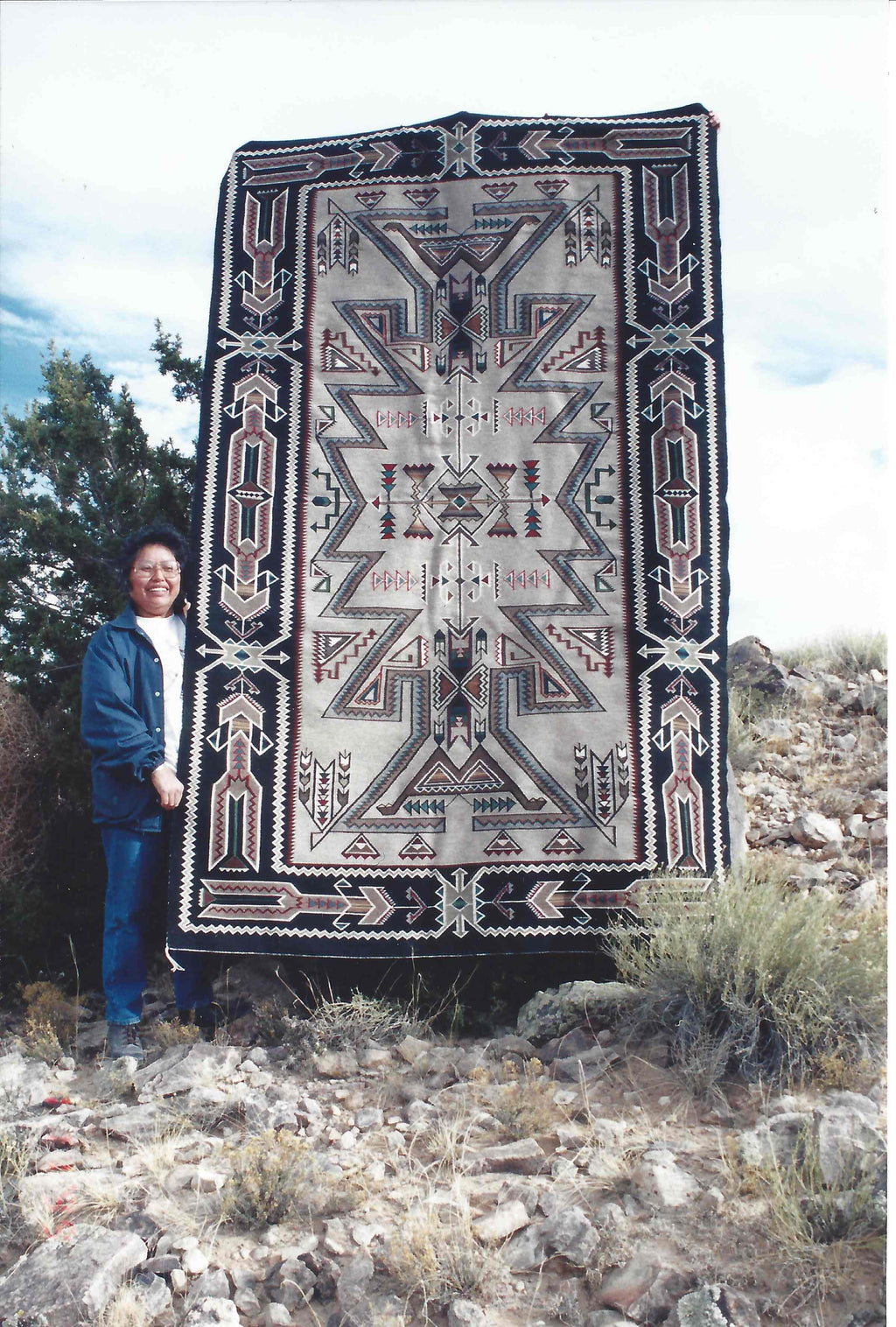
Teec Nos Pos Navajo Rug : Linda Nez : Churro 151 : 72" x 108" (6' x 9')
$ 185,000.00
Master Weaver Linda Nez's Teec Nos Pos. Made in the prime of her weaving career, meticulously woven, extremely tight and the design is flawless. This weaving took part in the "The Getzwiller Collection of Contemporary Navajo Weavings 1975 - 2000", at the Desert Caballeros Western Museum in Wickenburg AZ. It is an early one from our exclu...
Tree of Life Pictorial Navajo Rug : Berlinda Nez Barber : Churro 174 : 48" x 72" (4' x 6')
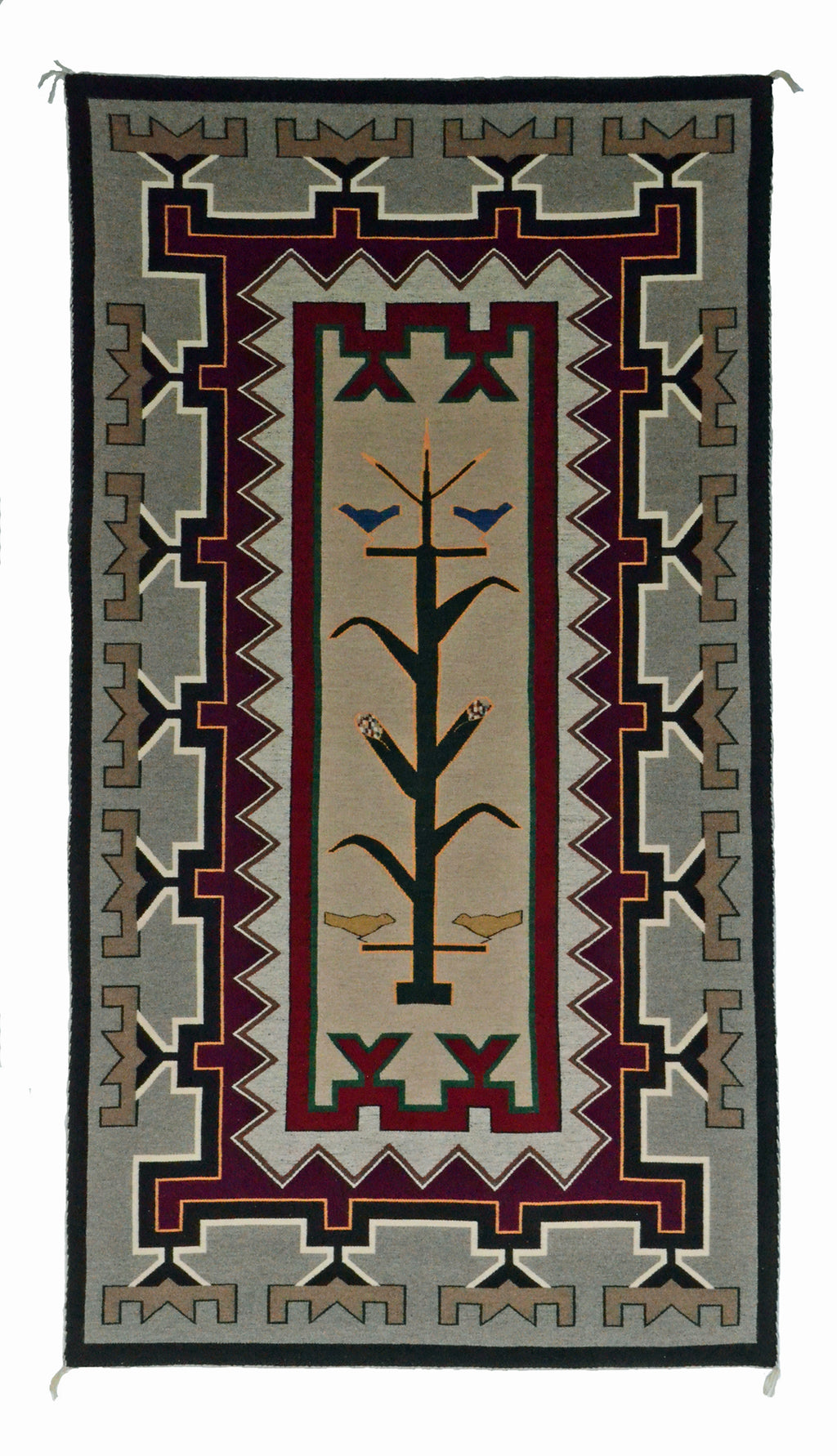
Tree of Life Pictorial Navajo Rug : Berlinda Nez Barber : Churro 174 : 48" x 72" (4' x 6')
$ 45,000.00
Tree of Life Pictorial Rug by Master Weaver Berlinda Nez Barber, at the height of her career! This rug is made from custom spun, hand dyed Churro wool. It has an extremely tight weave. On the loom for over 7 months. Tree of Life rug design remains a meaningful symbol to the Navajo people. A wonderful choice for celebrating the natural world...
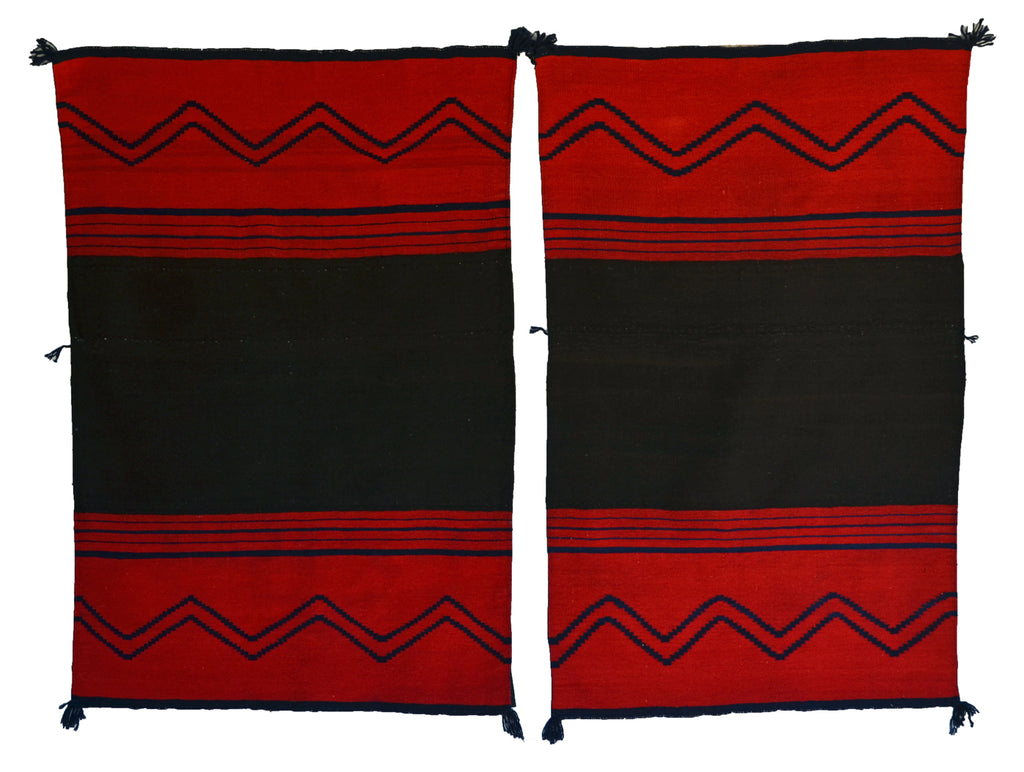
Navajo Dress Panels - Biil : Historic : PC 292 : 29" x 48" (2'5" x 4')
$ 40,000.00
Classic period Navajo Biil for sale - matching panels Very rare and in excellent condition! These Navajo Dress Panels (Biil) measure 29" x 48" (2'5" x 4'). With Lac and Indigo. Classic tie downs visible. Slight Ethnographic wear marks in the center of the panels add to the authenticity of the piece, making it a unique and valuable addition to...
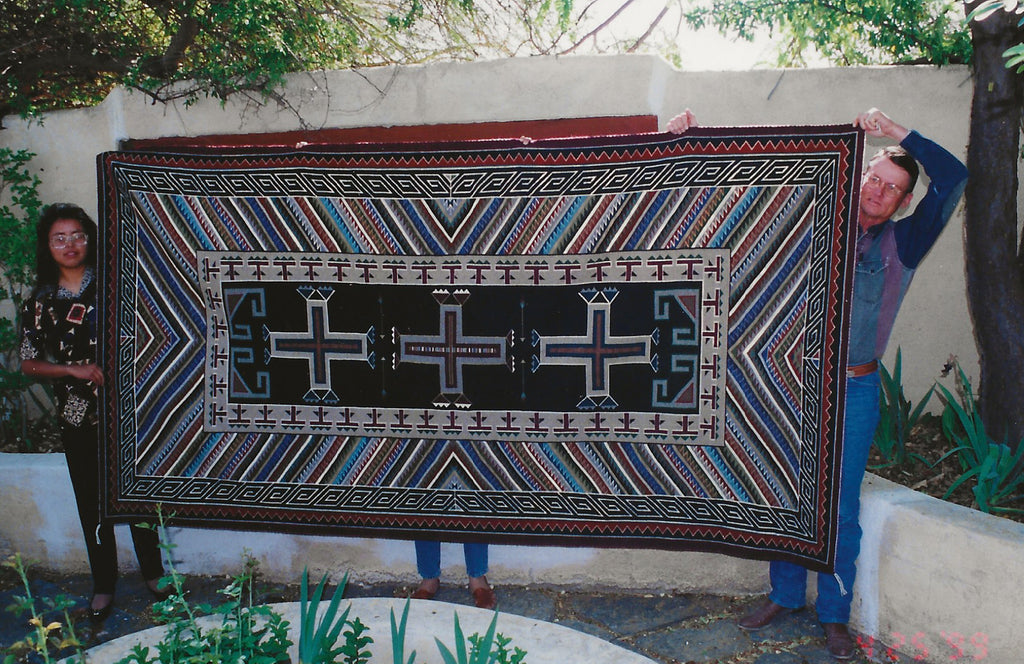
Teec Nos Pos / Red Mesa Navajo Rug: Cindy Nez : Churro 178 : 60" x 96" (5' x 8')
$ 65,000.00
Master Weaver Cindy Nez is an extremely talented weaver. She has won many awards. Woven using custom spun, hand-dyed Navajo Churro wool. This weaving took part in the "The Getzwiller Collection of Contemporary Navajo Weavings 1975 - 2000", at the Desert Caballeros Western Museum in Wickenburg AZ. It is an early one from our exclusive Churro ...




